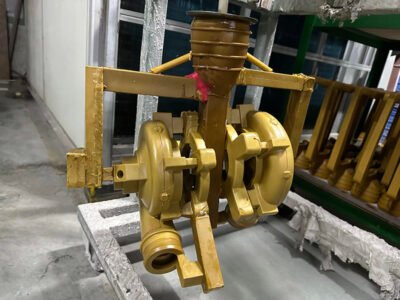custom stainless steel investment castings

Stainless steel investment castings have become increasingly popular in various industries due to their exceptional strength, corrosion resistance, and high precision. This article aims to provide a comprehensive guide to custom stainless steel investment castings, covering the process, applications, advantages, and frequently asked questions.
1. What is Investment Casting?
Investment casting, also known as precision casting or lost wax casting, is a metal casting process that uses a wax pattern to produce complex metal parts with high precision and surface finish. The process involves creating a wax model of the desired part, which is then coated with a ceramic shell. After the shell hardens, the wax is melted out, leaving a cavity that is then filled with molten metal. The metal solidifies and shrinks, resulting in a near-net shape part that requires minimal finishing.
2. Materials Used in Investment Casting
Stainless steel is the most commonly used material in investment casting due to its excellent properties. The following types of stainless steel are commonly used:
– Austenitic stainless steel: This type of stainless steel has high corrosion resistance, excellent formability, and good strength.
– Ferritic stainless steel: Ferritic stainless steel is known for its high thermal conductivity, good strength, and excellent oxidation resistance.
– Martensitic stainless steel: Martensitic stainless steel offers high strength, hardness, and good wear resistance.
3. Applications of Custom Stainless Steel Investment Castings
Custom stainless steel investment castings are used in a wide range of industries, including:
– Aerospace: Investment castings are used in aircraft engines, landing gears, and other components due to their high strength and precision.
– Automotive: The automotive industry utilizes investment castings for engine components, exhaust systems, and suspension parts.
– Medical: Investment castings are used in medical devices, such as orthopedic implants and surgical instruments, due to their biocompatibility and high precision.
– Energy: Investment castings are used in power generation equipment, such as turbines and heat exchangers, due to their excellent heat resistance and strength.
– Consumer goods: Investment castings are used in consumer products, such as kitchenware, sporting goods, and jewelry, due to their attractive appearance and durability.
4. Advantages of Custom Stainless Steel Investment Castings
The following advantages make custom stainless steel investment castings a preferred choice for many applications:
– High precision: Investment casting produces parts with tight tolerances and excellent surface finish, reducing the need for secondary operations.
– Complex geometries: Investment casting can produce complex shapes with intricate features that are difficult to machine.
– Material versatility: Stainless steel investment castings can be produced in various types, offering a wide range of properties to suit different applications.
– Cost-effectiveness: Investment casting can be more cost-effective than other casting methods, especially for small to medium-sized batches.
– Environmentally friendly: Investment casting is a green manufacturing process that minimizes waste and reduces energy consumption.
5. Investment Casting Process
The investment casting process consists of the following steps:
– Pattern creation: A wax pattern of the desired part is created using CAD/CAM technology or hand sculpting.
– Master mold creation: The wax pattern is placed in a mold, and a ceramic shell is poured around it. The shell is then heated to remove the wax, leaving a cavity in the shape of the part.
– Metal melting: Molten metal is poured into the cavity, and the shell is allowed to cool and solidify.
– Shell removal: The ceramic shell is broken away, revealing the finished part.
– Finishing: The part is cleaned, trimmed, and heat-treated to achieve the desired properties.
Frequently Asked Questions
1. What is the difference between investment casting and other casting methods?
Investment casting is a precision casting process that uses a wax pattern to produce complex shapes with high precision and surface finish. Other casting methods, such as sand casting and die casting, are less precise and may require additional machining to achieve the desired shape.
2. What are the benefits of using stainless steel in investment casting?
Stainless steel investment castings offer high strength, corrosion resistance, and excellent thermal properties, making them suitable for a wide range of applications in various industries.
3. Can investment casting be used to produce large parts?
Investment casting can produce parts of various sizes, but larger parts may require more complex molds and longer production times.
4. How does the investment casting process affect the quality of the part?
The investment casting process ensures high precision and excellent surface finish, which minimizes the need for secondary operations and improves the overall quality of the part.
5. What is the cost of investment casting compared to other casting methods?
Investment casting can be more expensive than some other casting methods, especially for small batches. However, the high precision and quality of investment castings often make them a cost-effective choice for complex parts.
